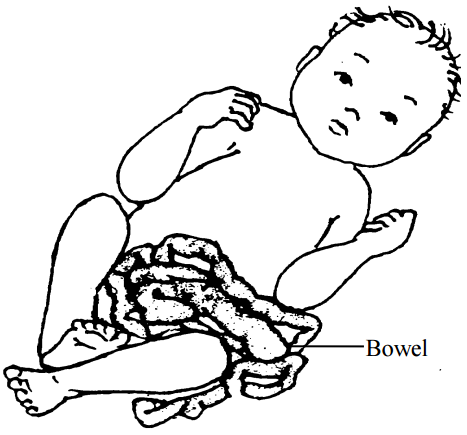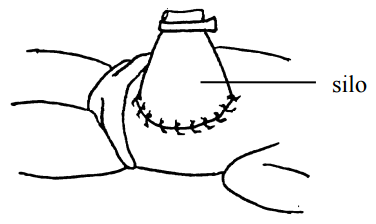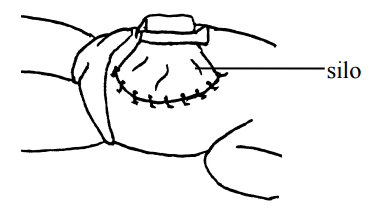Gastroschisis
What is gastroschisis?
Gastroschisis (gas-tro-ski-sis) occurs when a baby is born with the bowel and sometimes other organs coming through an opening in the abdomen (belly). The cause is unknown.

How is it treated?
Usually surgery will be done within a few hours after birth. Because there is no skin over the exposed organs, it is important to keep the baby warm and to provide fluids. The exposed organs are loosely covered to keep them moist until surgery. They may be covered with either dry or saline-soaked gauze and plastic wrap.
A small tube will be put in the infant's stomach through the mouth or nose (OG or NG tube) and attached to suction to keep the stomach empty. Your baby will have an intravenous (IV) line to provide fluids and nutrition. IV antibiotics may be needed to prevent infection.
Sometimes a ventilator (breathing machine) may be used to help your baby breathe.
During the surgery the baby's abdominal wall is stretched (it is very elastic) and the exposed organs are carefully put back inside.
If there is not enough room, the surgeon will leave some of the bowel outside the abdomen, and a "silo" (temporary covering) will be kept over it to keep it moist and clean.

The surgeon will gradually push the bowel back into the abdomen over the next few days. The opening will be closed in surgery.

What can I expect after surgery?
After the surgery most babies are on a ventilator (breathing machine) and get their fluids, pain medicines, and nutrition by IV. The doctors and nurses will watch for signs of the following:
- trouble breathing (because the organs in the abdomen may now put extra pressure on the lungs)
- infection
- bowel obstruction (blockage)
- pressure on the large veins that carry blood to the legs
- unstable temperature
Your baby will be in the neonatal intensive care unit (NICU) until he or she is stable and can start eating.
How can I care for my baby?
You can be involved in your baby's care right away! This could include changing the diaper, taking the temperature, or comforting your baby by talking softly or singing. Both you and your baby can enjoy and benefit from holding when it is okay. As always, be sure to wash your hands well before and after touching your baby.
Questions?
This sheet is not specific to your child but provides general information. If you have any questions, please ask the nurse or doctor.
Children's Hospitals and Clinics of Minnesota
Patient/Family Education
2525 Chicago Avenue South
Minneapolis, MN 55404
Last reviewed 8/2015 ©Copyright
This page is not specific to your child, but provides general information on the topic above. If you have any questions, please call your clinic. For more reading material about this and other health topics, please call or visit Children's Minnesota Family Resource Center library, or visit www.childrensmn.org/educationmaterials.
© 2024 Children's Minnesota
